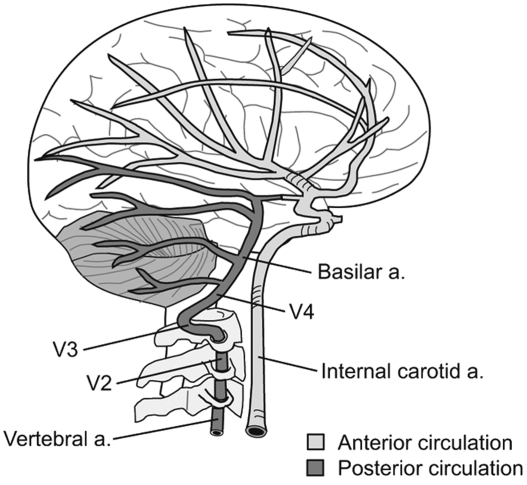Chiropractic and Stroke Incidence
SOURCE: Chiro.Org’s Stroke and Chiropractic Page
Recent reports of individuals suffering strokes proximal to receiving chiropractic care are sensationalized by the media all out of proportion to their actual frequency. Although medicine admits that tens of thousands die needlessly from medical accidents, even from things as innocuous as venipuncture, that doesn’t excuse chiropractors from their duty to protect our patients.
The Stroke and Chiropractic Page was crafted to keep our profession abreast of information that may help predict (and perhaps prevent) strokes.
This Introduction reviews those physical findings that may indicate whether a new or existing patient is in the prodromal state of stroke onset, so that we can refer them for co-management. I hope you will read this information closely.
Chiropractic and Stroke
Stroke is one of the leading causes of death. The CDC reports that 700,000 people experience a stroke each year, and that 160,000 of them are fatal. The risk of death from stroke also increases with age.
Statistics, reviewed between the years 1979 to 1991, found that the yearly incidence rates of death by stroke for those in the 25–44 years age bracket was only 3,418 deaths, whereas at the age of 65 or above, incidence rates increased to 140,938 deaths yearly. [1]
Stroke is characterized by the sudden loss of circulation to an area of the brain, resulting in a corresponding loss of neurologic function. Also called a “Cerebrovascular Accident” (CVA), stroke is a nonspecific term, which describes a cross–section of pathophysiologic causes, which include thrombosis, embolism, and hemorrhage. [1]
Chiropractors are particularly interested in strokes caused by “Vertebral Artery Dissection” (VAD). Dissections of the Carotid Artery (CAD) or the Vertebral Artery (VAD) are relatively rare. The combined incidence of both VAD and CAD is estimated to be 2.6 per 100,000. However, cervical dissections are the underlying etiology in as many as 20% of the ischemic strokes presenting in younger patients aged 30–45 years. Among all extracranial cervical artery dissections, CAD is 3–5 times more common than VAD. The female–to–male incidence ratio is 3:1 [2]
 |
The path of the Vertebral Artery is well described elsewhere. [2] The portion referred to as Segment III follows a “tortuous” route from the transverse foramen of C2, running posterolaterally to loop around the posterior arch of C1”. This is the most common site for VAD associated with cervical manipulation. The rest of this page is devoted to examining the causes of Vertebral Artery Dissection. VAD has occurred following actions as trivial as coughing, rotating the head to back a car out of a driveway, and other “normal” activities like archery and visits to the hairdresser. (See the collected abstracts below). |
Read the rest of our Stroke introduction now!




I have a great VBA talk on CD from New Zeland Chiropractic school if any one is interested?
Thank You
Thank you, this is an excellent article. Here is a related post from my blog on stroke risk and chiropractic care:
http://www.chiropractor-sacramento.com/chiropractic-strokes-is-it-safe
Amazing article, I’ve bookmarked it to read again. This website was really a worthwhile find.
As long as rumors about the safety of chiropractic exist, we must work to educate the general public. The Foundation for Chiropractic Progress is doing a great job with campaigns by Jerry Rice and others. Every doctor DC needs to post articles proving efficacy of chiropractic and the fallacy of the stroke connection onto their website and work to educate the public, one patient at a time. In time, the public will come to know that chiropractic is the safest and most effective health care system available.
Thanks for keeping Chiropractic and Stroke information up to date.